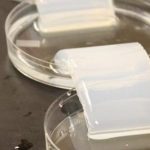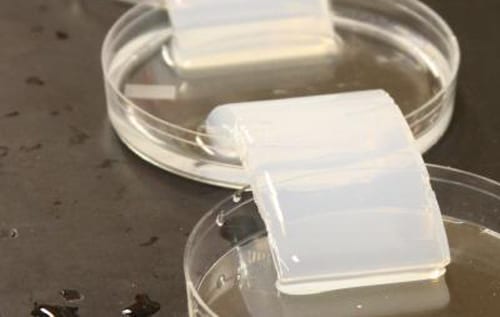 Like people, the growth and development of cells is strongly dependent on their local environment. Cells can be cultured in two dimensions in a polystyrene dish, but this environment lacks many of the cues that cells in your body experience. For starters, in living organisms cells are surrounded on all sides by an extracellular matrix and other cells – people don’t grow in two dimensions. Chemical signals and electrical from the extracellular matrix influence the development of cells. And, organisms move – even mechanical cues can change how cells behave. Combining these three kinds of environmental cues in a three-dimensional matrix has been a challenge.
Like people, the growth and development of cells is strongly dependent on their local environment. Cells can be cultured in two dimensions in a polystyrene dish, but this environment lacks many of the cues that cells in your body experience. For starters, in living organisms cells are surrounded on all sides by an extracellular matrix and other cells – people don’t grow in two dimensions. Chemical signals and electrical from the extracellular matrix influence the development of cells. And, organisms move – even mechanical cues can change how cells behave. Combining these three kinds of environmental cues in a three-dimensional matrix has been a challenge.
Now, a team of bioengineers from the University of California, San Diego report in Advanced Functional Materials a 3D artificial environment that provides all three of these kinds of cues. They embedded stem cells in a hydrogel with a cell-growth-compatible electrolyte. Application of an electric field causes the hydrogel to bend, providing a combination of electrical and mechanical cues to the cells.
The researchers describe how mesenchymal stem cells derived from human bone marrow can be influenced to differentiate into cartilage cells as a result of the applied combination of electrical, mechanical, and chemical signals.
This new cell matrix material could find application in the clinic, where human stem cells would be cultured in an artificial environment before being implanted into humans. Finer control over the stem cells before implantation could positively influence that they differentiate into the right kinds of cells.

















